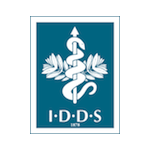 You’ve been brushing your teeth twice a day, but you’ve noticed your gums are a bit more tender than usual. As soon as your gums continue to swell, you figure that you’ve just been brushing too hard. But then your gums start to bleed. This is a red flag that you likely have gingivitis.
You’ve been brushing your teeth twice a day, but you’ve noticed your gums are a bit more tender than usual. As soon as your gums continue to swell, you figure that you’ve just been brushing too hard. But then your gums start to bleed. This is a red flag that you likely have gingivitis.
Gingivitis may develop between dental checkups but there’s good news: switching up your dental routine can reverse gingivitis.
What is Gingivitis?
Gingivitis is a common form of gum disease that causes bleeding and inflamed gum tissue. If left untreated, it can lead to the loss of gum tissue and eventual decay of the tooth’s bone. While gingivitis doesn’t necessarily mean tooth loss, if you ignore these tell-tale symptoms, you are putting your smile at risk for a more severe form of gum disease: periodontal disease, which not only impacts your teeth but can also have negatively effect on your overall health.
I think I have Gingivitis: What Can I Do?
Once you’ve seen signs of gingivitis, it’s time to reassess your oral health routine.
You can help keep gingivitis from progressing by:
- Visiting your dentist. Regular dental cleanings are key to keeping gum disease at bay.
- Your dentist may suggest routine deep cleanings.
- Brush and floss regularly. Did you know that he way you brush your teeth impacts the safety of your oral health?
- Antibiotics, mouthwashes, and oral treatments can successfully treat this form of gum disease.
Is There a Cure for Gingivitis?
Fortunately, gingivitis can be treated in the dental office and at home. Brushing, flossing, and rinsing your mouth at least twice a day reduces gingivitis. Schedule regular visits with your dentist for check-ups and cleanings. Want to step up your oral health routine?
Here are few extra steps you can take to care for your smile:
- Rinse your mouth with warm water after heavy snacks and meals. Pastries, sugar, beans, meat, bread tend to stick to the gums and hide in hard to reach places.
- Use mouthwash to push out hidden food particles.
- Consider a water flosser to achieve that “after the dental office” clean feeling.
- Use a toothbrush that has the appropriate bristle texture to clean your teeth without damaging the gum lining. If you’re suffering from gingivitis, soft bristles are the best.
- Replace your toothbrush bi-monthly to prevent germs from going back into your mouth. Throw away brushes with bent bristles because they can erode tooth enamel.
With a proper at-home regimen and regular dental visits, you can keep gingivitis away and even prevent it from progressing into more severe forms of gum disease.







